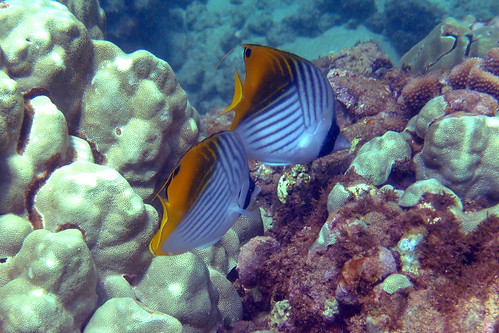GIS as an integrative tool in Marine Biology

The Australian Institute of Marine Science (AIMS) has developed a promising Geographic information System, which enables researches to integrate data and to share results much more effectively than before.*
The natural systems studied at the AIMS are very complex, yet highly interactive. Because of their complexity, different researchers carry out their specialised analyses in isolated studies. It is only in the final stages of their research that they bring their findings together. By that time, it is too late for any real experimental integration.
However, recently a centralised, online data management system has been developed (EGIS), in which all data is associated with a spatial feature. This enables researchers to work together and to share information much more efficiently.
Firstly, there is a set of common data (for example on water temperature in different locations), which is used widely by researchers in different fields. Thanks to EGIS, these are now accessible to all, and both in the labratory and at sea. This means that the time consuming process of data transfer is avoided.
Secondly, in EGIS, new research data can be added constantly. This means that researchers can now compare and analyse data from different projects, while working on their own. For example, some of the findings by researchers working on oceanographic modeling or marine biodiversity may be valuable to those working on marine biotechnology. And because data from all these fields are available online, they do no longer have to work in isolation.
A next step would be to share information with other organisations. To stimulate such an exchange and integration, the Australian government has set up the Cooperative Research Centre Reef (CRCReef). In fact, other marine institutes have recently installed spatial Web servers, which means that sharing information will be possible.
However, there are still a few obstacles to overcome, before the system can work smoothly. First and foremost, many (older) datasets are still non-spatial, yet very important for the research. Also, the display of results is rarely hazzle-free and there is the issue of intellectual property rights. It is very important for researchers to have exclusive access to their data until they are published. However, by that time, too long a period might have passed for the raw data to be useable by another researcher.
Currently, the most promising applications of the EGIS data set seems to be in the field of prediction. By combining spatial data from different research and the use of statistical methods future scenarios can be explored for a specific reef area.
Niels van Manen
SPINlab, Vrije Universiteit, Amsterdam
* A much more detailed description of the EGIS and its working can be found in:
Stuart James Kininmonth, ‘GIS: The key to research integration at the Australian Institute of Marine Science’ in: Marine Geography: GIS for the oceans and seas, by Jeo Breman (ed.) (2002), p. 67-71.



